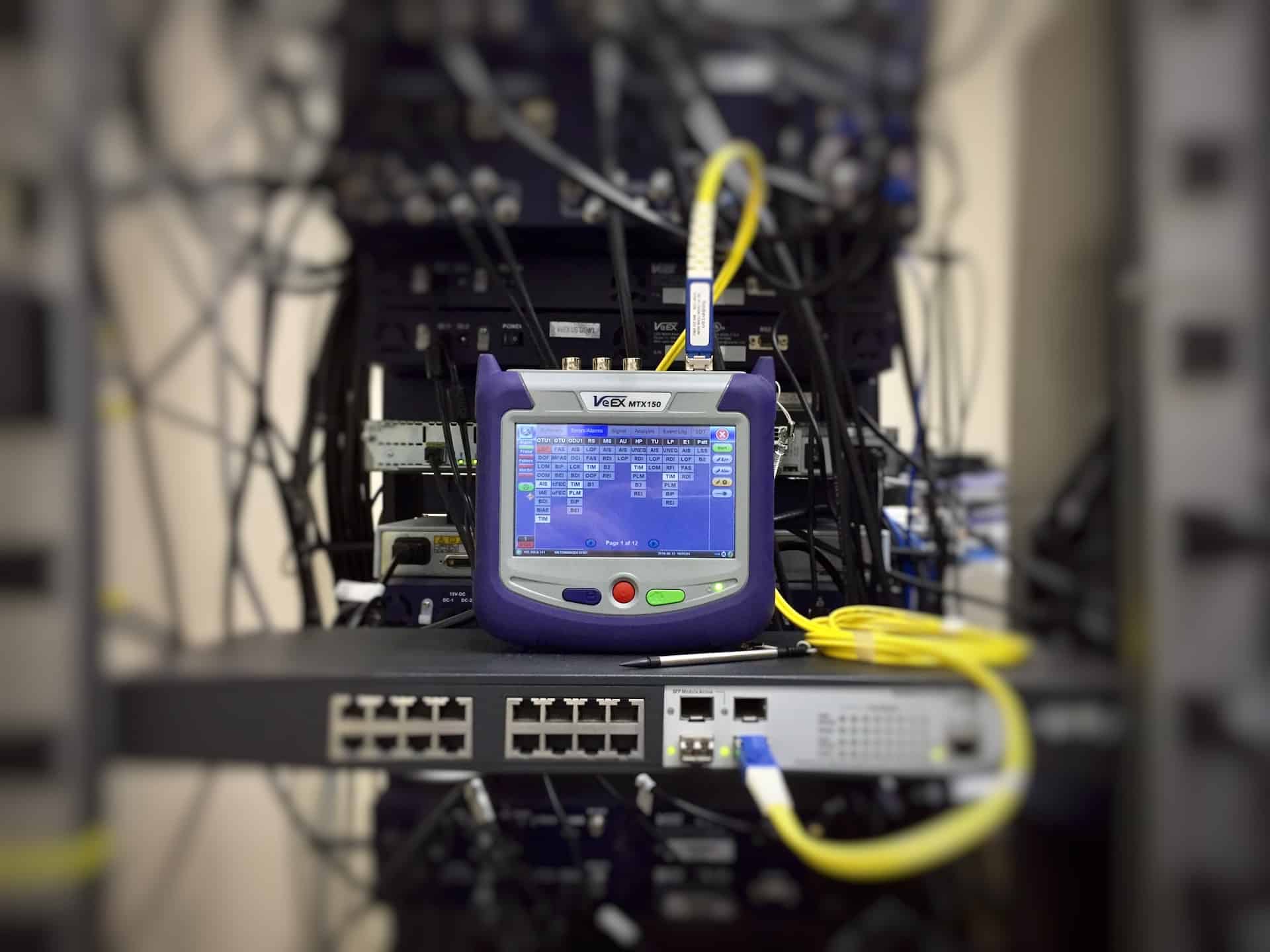Professionals use optical fibre testing equipment to maintain efficient data transmission.
Professionals use optical fibre testing equipment to maintain efficient data transmission.
Blog Article
Discover the Importance of Optical Fiber Testing in Modern Telecommunications
In the realm of modern-day telecoms, the importance of optical fiber testing can not be overstated, as it offers as the backbone for ensuring network dependability and efficiency. What are the particular benefits that routine screening offers, and just how might it form the future landscape of telecommunications?

Comprehending Optical Fiber Testing
Optical fibre screening is an important procedure in telecommunications that makes sure the integrity and performance of fibre optic networks. This testing incorporates a variety of treatments developed to review the physical and practical qualities of optical fibers - robotic vision. Secret specifications evaluated include optical power loss, data transfer ability, and fault area, which are necessary for keeping top quality interaction links
The screening procedure generally includes using specific devices such as Optical Time-Domain Reflectometers (OTDR) and Optical Power Meters. OTDRs are utilized to recognize and characterize faults, interlaces, and connectors within the fiber, while power meters gauge the transmitted light signal strength to establish effectiveness.
Furthermore, screening is conducted at different stages, including during installation, maintenance, and troubleshooting, to ensure that the network fulfills sector requirements and operational needs. Compliance with standards set by companies like the International Telecommunication Union (ITU) and the Telecoms Industry Organization (TIA) is paramount.
Benefits of Routine Evaluating
Normal screening of optical fibres returns various advantages that considerably enhance network dependability and efficiency. Among the primary advantages is the early discovery of prospective problems, such as breaks or degradation in the fiber, which can cause costly downtime if left unaddressed (robotic vision). By determining these troubles proactively, telecoms companies can reduce service disturbances and guarantee constant connection for their customers
Additionally, normal testing helps to preserve the integrity of signal high quality. As optical fibres age, their efficiency can be influenced by elements such as ecological problems and physical tension. Regular assessments enable the tracking of signal loss and general transmission efficacy, making certain that the network runs at ideal degrees.
An additional substantial benefit is conformity with industry requirements. Normal screening supports adherence to regulative requirements, therefore mitigating lawful and economic dangers connected with non-compliance. It enhances the overall lifespan of the fibre infrastructure by helping with prompt upkeep and repair work.

Usual Evaluating Techniques
Checking optical fibres uses various techniques to make certain the integrity and efficiency of telecoms networks. Amongst one of the most usual strategies is Optical Time Domain Name Reflectometry (OTDR), which analyzes the entire length of the fiber by sending out a pulse of light and determining the reflections triggered review by blemishes or breaks. This method provides in-depth info about the place and intensity of mistakes.
One more prevalent approach is making use of Optical Power Meters, which determine the amount of light transmitted via the fibre. This strategy assists determine the loss of signal strength, ensuring that it meets industry standards. Furthermore, Aesthetic Fault Locators (VFL) are utilized to recognize breaks or extreme bends in the fiber by projecting a noticeable laser light right into the cable.
Insertion loss screening is also vital, as it evaluates the loss of signal power resulting from connections and splices within the network. Additionally, making use of Polarization Setting Diffusion (PMD) screening examines the effect of fibre attributes on signal integrity.
Each of these techniques plays an essential duty in keeping the performance and reliability of optical fiber networks, inevitably adding to smooth telecommunications operations.
Impact on Network Efficiency
The honesty and efficiency of optical fibre networks straight influence total network efficiency. In modern-day telecoms, the effectiveness of information transmission counts heavily on the top quality of the optical fibers used. Any type of degradation in the fiber's condition-- whether as a result of physical damages, contamination, or too much bending-- can result in increased attenuation and signal loss, considerably influencing information honesty and rate.
Regular optical fiber screening is vital to recognize and rectify prospective concerns prior to they manifest as network useful source failures or downturns. Strategies such as Optical Time Domain Reflectometry (OTDR) and insertion loss testing enable service technicians to determine the efficiency of fiber web links precisely. These examinations not only evaluate the physical condition of the fibers however additionally ensure compliance with sector standards, therefore safeguarding the network's dependability.
Moreover, a well-kept optical fiber network contributes to decreased functional prices and improved client contentment, as end-users experience fewer disruptions and greater information rates. Eventually, the focus on rigorous optical fibre screening techniques functions as a cornerstone for maintaining durable telecommunications framework, making sure that provider can meet the expanding needs for data transfer and connectivity in today's electronic age.
Future Trends in Examining
As we look ahead, innovations in technology are positioned to reshape optical fiber screening in telecommunications. The rise of automation and man-made knowledge (AI) is expected to improve the performance and precision of screening procedures. Automated screening systems can carry out detailed analyses with marginal human treatment, substantially lowering the possibility for mistakes and accelerating time-to-deployment.
In addition, the assimilation of artificial intelligence formulas will certainly make it possible for anticipating upkeep, allowing network service providers to visualize prospective problems before they escalate into failures. This aggressive method not just enhances network reliability but additionally enhances operational prices.
An additional emerging trend is the growth of portable testing tools that provide useful link real-time analysis - robotic vision. These devices will certainly equip specialists to execute on-site diagnostics quickly, promoting quicker resolutions and boosting solution top quality
The expansion of 5G networks even more demands the evolution of testing methodologies. As data transfer needs enhance, standard screening strategies may no more suffice. Innovative services such as optical time-domain reflectometry (OTDR) and progressed spectral evaluation will become critical in guaranteeing the integrity and efficiency of high-speed connections.

Conclusion
In conclusion, optical fiber testing is crucial for making certain the stability and reliability of modern-day telecommunications networks. Regular screening practices not just aid determine potential issues such as signal loss and faults yet likewise contribute to improved network efficiency and client complete satisfaction. As the need for seamless connection remains to grow, the adoption of sophisticated testing approaches will play a crucial function in keeping high-quality network standards and supporting the advancing landscape of telecoms.
Report this page